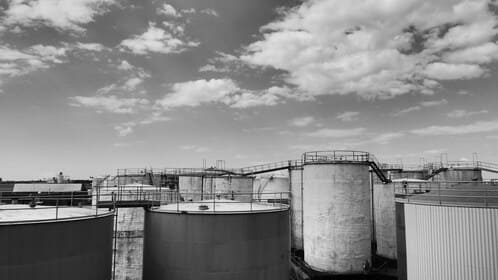FBG sensors have proven to be effective and useful during their implementations into different kinds of structures. They have become a necessary part of projects that aim to operate for long periods of time.
Fiber Bragg Grating Sensors Applications
There are various types of FBG sensors based on the parameters they monitor: temperature, strain, displacement, etc. They have a number of advantages that make them highly effective even in the most harsh environment. Compact size, fast response, immunity to electromagnetic interference and other factors usually play a critical role in many situations.
For example, fiber optic sensors are widely used for monitoring of long structures such as tunnels and pipelines. In addition to the ability of the remote control, they provide stable operation over a long period of time. Therefore, they don’t require any additional repairs.
The other advantage of fiber Bragg gratings is multiplexing. A single optical fiber can contain multiple FBGs at the same time. This fact makes it a cost-effective instrument even for large infrastructures. This is especially true when compared to techniques where each sensor is placed separately. Due to their size and weight, fiber optic sensors can be installed in most applications.
FBG Sensors for Strategic Buildings
FBG sensors are widely applied for structural health monitoring of various existing structures including critical facilities such as bridges, strategic buildings, etc. The main problem with this type of construction is related to the appearance of cracks. Cracks can cause many problems in the operation of the construction. They are dangerous because they can be invisible to specialists and unpredictable in terms of growth rate, both of size and speed. Unfortunately, there are a lot of examples where buildings have been ruined because of this, sometimes with tragic consequences.
When it comes to bridges in particular, real-time structural health monitoring is an effective tool for structural safety. Continuous monitoring is required for safety verification especially after extreme events.
Fiber Optic Sensors in Coal Mines
The other application field where fiber optic sensors are used is coal mining infrastructure. Electronic sensors can’t provide an effective structural health monitoring due to the extreme environment in coal mines. On the contrary, in most cases, FBG sensors are chosen for their ability to operate in harsh conditions such as darkness, vibration and for their immunity to electromagnetic interference. Coal mines are in need of a modern monitoring system for the fulfillment of the operating conditions of the tunnels and the transmission of the data to the control center. Structural health monitoring provides specialists with early warning of potential coal mine failures.
Fiber Bragg grating sensors build a safety control structure health monitoring system that accurately observes the processes. It can monitor various parameters but for the coal mines the most common sensors are FBG temperature sensors and FBG pressure sensors. Fiber optic sensors are embedded in the structure itself and function during the lifetime.
FBG sensors have gained increasing interest due to their ability to alert about any tiny or critical changes. The personnel can react to the alarm and prevent the possible disaster. And if it’s already happened, the fiber optic system can help in estimating the damage.
Optromix is a fast-growing vendor of fiber Bragg grating (FBG) product line such as fiber Bragg grating sensors, for example, FBG strain sensors, FBG interrogators and multiplexers, Distributed Acoustic Sensing (DAS) systems, Distributed Temperature Sensing (DTS) systems. The company creates and supplies a broad variety of fiber optic solutions for monitoring worldwide. If you are interested in structural health monitoring systems and want to learn more, please contact us at info@optromix.com










